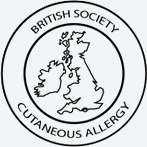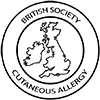Sesquiterpene Lactone or Compositae
What are the aims of this patient information leaflet?
This leaflet has been written to help you understand more about your contact allergy. It tells you what a contact allergy is, what causes this allergy and what you can do about it.
What is contact allergy?
Dermatitis, also known as eczema, describes a type of inflammation of the skin. Contact dermatitis or contact eczema is a term used when this inflammation is caused by direct or indirect skin contact with something in your environment. Allergic contact dermatitis occurs when your immune system causes allergy to a very specific chemical or substance that has been in contact with the skin.
What causes your specific allergy?
Your patch tests indicate that you have a contact allergy to sesquiterpene lactone/compositae.
What is sesquiterpene lactone/compositae?
This means you are allergic to plants in the daisy family. They are also known as Asteraceae. The Compositae family includes many garden plants, wild flowers, vegetables and herbs.
What are some products that contain sesquiterpene lactone/compositae?
Wild flowers/ weeds
- Dandelion
- Daisies
- Yarrow
- Ragweed
- Chamomiles
- Mayweeds
- Mugwort
- Liverwort.
Garden plants
- Chrysanthemum
- Dahlia
- Cineraria
- Arnica
- Golden rod
- Elecampane (Inula)
- Rudbeckia
- Gaillardia
- Helenium
- Sunflower
- Magnolia.
Vegetables/ herbs
- Chamomile
- Chicory
- Lettuce
- Endive
- Feverfew
- Tansy
- Sweet bay (Laurus nobilis).
Some cosmetics, toiletries and aromatherapy oils may contain compositae. These are often termed ‘natural’ products. Plants will be labelled by their botanical Latin names for example Chamaemelum nobile (Chamomile).
Other sources include herbal remedies including chamomile and arnica, herbal teas such as chamomile tea and a nipple cream, Kamillosan.
Remember, always check the label, these lists can never be complete and ingredients change.
How can I manage my allergy?
This means that you should avoid putting products containing sesquiterpene lactone/compositae onto your skin in the future.
If your skin touches these plants you may develop eczema at that site 1 to 3 days later. Occasionally airborne chemicals from natural oils or composite plants may be the cause of eczema on your face, neck, hands or other exposed areas. It is therefore best to avoid direct contact and avoid growing these plants in your garden.
Nitrile gloves may help to protect the hands from exposure to plant allergens. Natural essences and aromatherapy products should be avoided around the home. Some people with compositae allergy notice their skin is more sensitive to sun than usual and may develop a skin condition with time, chronic actinic dermatitis.
Self-care (what can I do?)
Always check the ingredient listing on the product, package or package insert as these lists can never be complete and ingredients change. This is particularly important for any products purchased outside the EU where some allergens may not be banned.
Created: 2016

